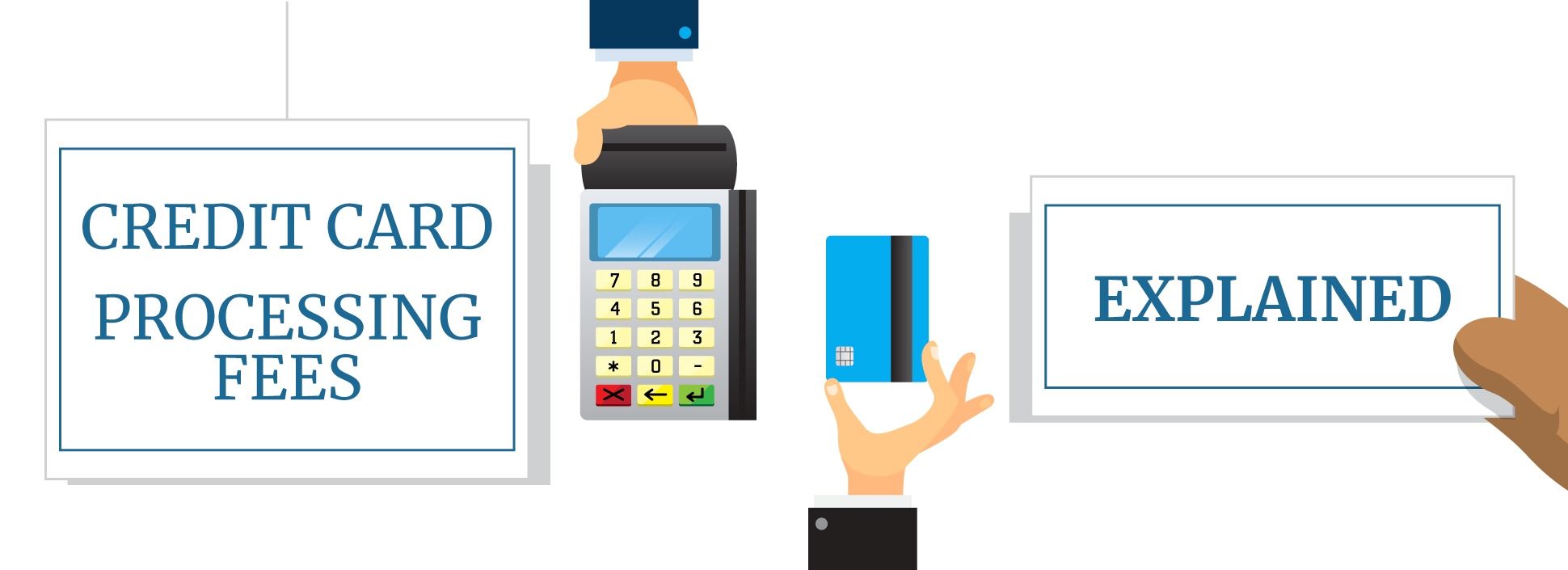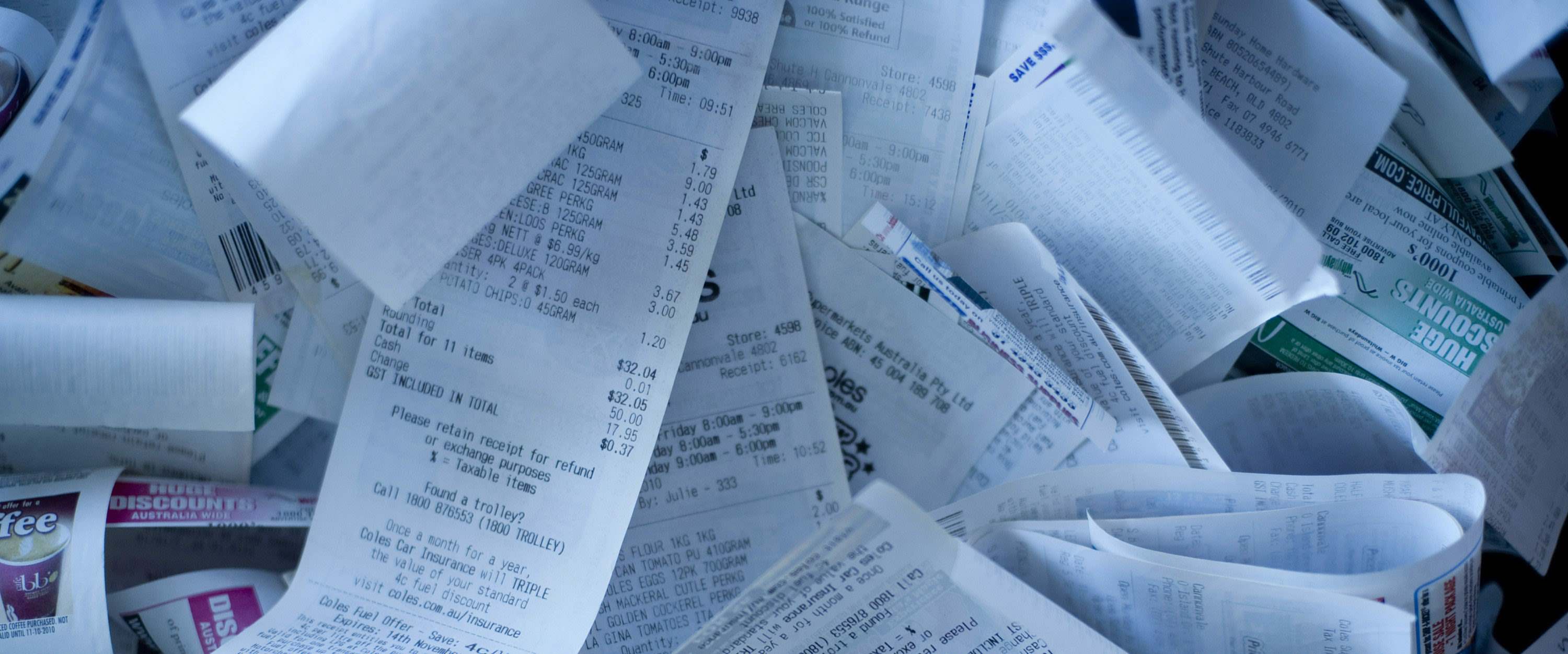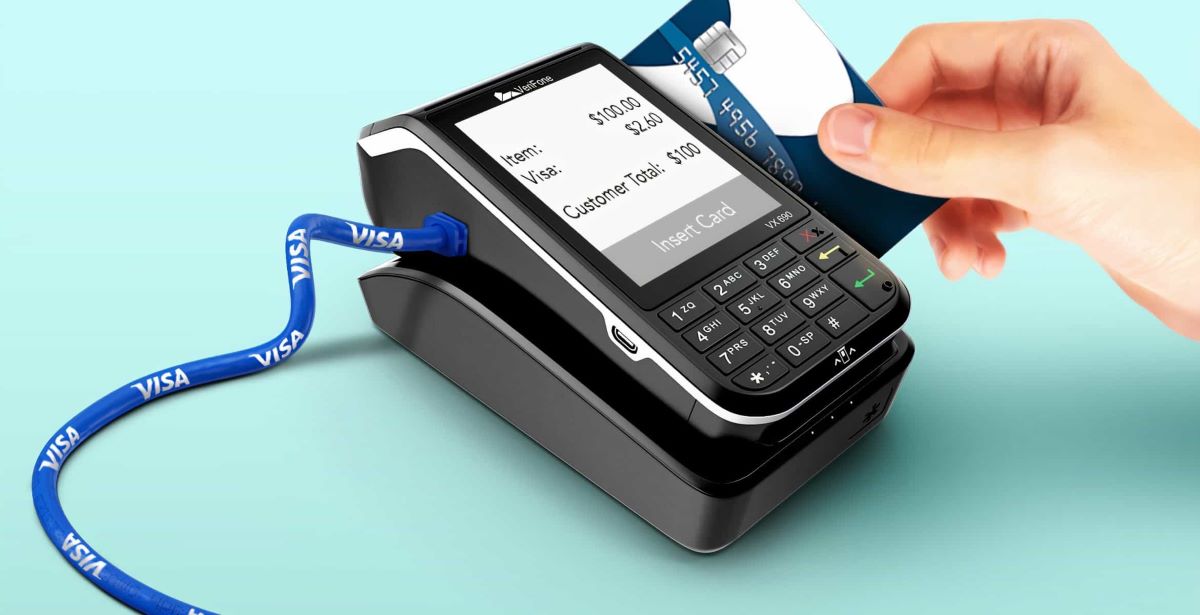

Finance
What Do Merchants Do With Credit Card Receipts
Modified: February 21, 2024
Discover what merchants do with credit card receipts and how it affects their finance. Improve your understanding of financial operations in retail.
(Many of the links in this article redirect to a specific reviewed product. Your purchase of these products through affiliate links helps to generate commission for LiveWell, at no extra cost. Learn more)
Table of Contents
Introduction
Credit card receipts are an integral part of the transaction process for merchants worldwide. When customers make purchases using credit cards, these receipts serve as a proof of payment and contain important information about the transaction. But what exactly do merchants do with these receipts? In this article, we will explore the various roles and functions that credit card receipts play in a merchant’s operations.
Managing credit card receipts effectively is not only crucial for record keeping and accounting purposes, but it also serves as a means of resolving customer disputes, preventing fraud, complying with regulatory requirements, considering environmental impact, and ensuring secure storage and destruction. By understanding the importance and significance of credit card receipts, merchants can streamline their operations, protect their customers, and maintain compliance with financial and legal standards.
Throughout this article, we will delve into each of these areas in detail, shedding light on the multifaceted nature of credit card receipts and how they contribute to the overall success and integrity of a merchant’s business.
Importance of Credit Card Receipts
Credit card receipts hold great importance for merchants. They serve as critical documentation for various aspects of their business operations. Let’s delve into the key reasons why credit card receipts are so vital:
Record Keeping and Accounting:
Credit card receipts serve as a vital tool for record keeping and accounting purposes. They provide a clear and detailed trail of each transaction made by customers, including the date, time, amount, and items purchased. This documentation is essential for accurate bookkeeping, reconciling accounts, and preparing financial statements. Credit card receipts enable merchants to maintain an organized and comprehensive record of their sales transactions, making it easier to track revenue and expenses, analyze trends, and plan for future business growth.
Customer Dispute Resolution:
Credit card receipts play a crucial role in resolving customer disputes. In case of any discrepancies, such as incorrect charges or disputed transactions, merchants can refer to the credit card receipts as evidence to investigate and resolve the issue. The receipt contains important details like the cardholder’s signature, authorized amount, and the merchant’s information, which can help to verify the legitimacy of the transaction. By providing accurate and timely information, credit card receipts enable merchants to address customer concerns and ensure a satisfactory resolution.
Fraud Prevention:
Credit card receipts are instrumental in combating fraud. They provide a paper trail that can be used to detect and prevent fraudulent activities. Merchants can compare the signatures on the receipts with the signature on the credit card and verify the identity of the cardholder. Moreover, by closely examining the details on the receipt, such as the cardholder’s name, card number, and expiration date, merchants can spot any inconsistencies or suspicious transactions, triggering additional security measures to prevent potential fraud.
Compliance with Regulatory Requirements:
Credit card receipts help merchants comply with regulatory requirements and industry standards. Payment card industry regulations require merchants to retain credit card receipts for a specific period of time to demonstrate compliance with security and privacy standards. By keeping these receipts on file, merchants can provide evidence of adherence to regulations and protect themselves in the event of an audit or dispute. Maintaining compliance not only safeguards the merchant’s reputation but also builds trust with customers and financial institutions.
Credit card receipts hold immense importance for merchants in various domains of their operations. They are pivotal for maintaining accurate financial records, resolving customer disputes, preventing fraud, complying with regulations, and demonstrating accountability. Recognizing the significance of credit card receipts enables merchants to streamline their processes, mitigate risks, and foster strong customer relationships, making them an indispensable aspect of a successful business.
Record Keeping and Accounting
Credit card receipts play a critical role in the record keeping and accounting processes of merchants. Receipts serve as tangible proof of the transactions that have taken place between the merchant and the customer. Let’s explore the importance of credit card receipts in record keeping and accounting:
Organized Financial Records:
Credit card receipts provide a systematic and organized way to maintain financial records. Each receipt contains essential details such as the date, time, amount, items purchased, and payment method. Merchants can use this information to accurately track sales, expenses, revenue, and cash flows. By keeping credit card receipts in a well-structured manner, merchants can easily access and reference them when needed, making financial reporting and analysis more efficient and accurate.
Reconciliation and Audit Trails:
When it comes to reconciling accounts, credit card receipts help merchants ensure that their financial records align with their actual transactions. By comparing the receipts with bank statements, merchants can identify any discrepancies and reconcile their accounts accurately. Additionally, credit card receipts serve as a vital part of a thorough audit trail. They provide evidence of sales transactions, which is crucial in audits conducted by financial institutions or tax authorities.
Expense Tracking:
Credit card receipts help merchants monitor and track their expenses effectively. By retaining these receipts, merchants can record and categorize their purchases, making it easier to analyze spending patterns, identify cost-saving opportunities, and determine the profitability of specific products or services. Credit card receipts provide a detailed breakdown of each transaction, allowing for accurate expense allocation and budgeting.
Tax Compliance:
Accurate record keeping is essential for tax compliance. Credit card receipts serve as documentation to support business expenses claimed as deductions during tax filing. By retaining these receipts, merchants can provide evidence in case of an audit by tax authorities. Furthermore, credit card receipts can also help in determining the appropriate sales tax or VAT calculations, ensuring compliance with tax regulations and avoiding potential penalties or legal issues.
Financial Analysis and Planning:
Credit card receipts provide valuable data for financial analysis and planning. Merchants can use the information on receipts to identify their bestselling products or services, monitor sales trends, and assess the effectiveness of marketing campaigns. This data can guide strategic decision-making, such as inventory management, pricing strategies, and expansion plans. By leveraging credit card receipts to gain insights into their business performance, merchants can optimize their operations and drive growth.
Overall, credit card receipts are integral to maintaining accurate financial records and facilitating the accounting process for merchants. With the help of these receipts, merchants can ensure the reliability and integrity of their financial data, comply with regulatory requirements, track expenses, and make informed business decisions. By recognizing the importance of credit card receipts in record keeping and accounting, merchants can establish solid financial management practices and foster long-term business success.
Customer Dispute Resolution
Credit card receipts play a crucial role in resolving customer disputes. When a customer raises a concern or disagrees with a transaction, credit card receipts become valuable evidence that can help merchants investigate and address the issue in a fair and efficient manner. Let’s explore the significance of credit card receipts in customer dispute resolution:
Evidence of Purchase:
Credit card receipts serve as concrete evidence that a transaction took place between the merchant and the customer. They indicate the date, time, amount, and items purchased, providing a clear record of the transaction details. When a customer disputes a charge or questions the validity of a transaction, the merchant can refer to the credit card receipts as evidence to verify the legitimacy of the purchase. This evidence helps to build a strong case and resolve the dispute promptly.
Verification of Cardholder Identity:
Credit card receipts contain important information, such as the cardholder’s name and the last four digits of the credit card number. Merchants can use this information to verify the identity of the person disputing the charge. By comparing the information on the credit card receipt with the identification presented by the customer, merchants can ensure that the dispute is genuine and that the right person is involved in the resolution process.
Authentication of Signature:
When customers make a purchase using a credit card, they typically sign the credit card receipt. This signature serves as a way to authenticate that the cardholder authorized the transaction. If a dispute arises regarding the purchase, the merchant can compare the signature on the credit card receipt with the one on the back of the credit card. This step helps confirm the cardholder’s agreement to the transaction and aids in resolving any discrepancies.
Communication Tool:
Credit card receipts serve as a valuable communication tool between merchants and customers during the dispute resolution process. Merchants can include contact information, such as customer support numbers or email addresses, on the receipt. This allows customers to easily reach out to the merchant if they have any questions or concerns regarding the transaction. By fostering open communication, merchants can address customer issues promptly and reach a satisfactory resolution.
Fair and Timely Resolution:
Credit card receipts enable merchants to resolve customer disputes in a fair and timely manner. By having access to the transaction details, merchants can investigate the issue thoroughly and provide an accurate response. Whether it’s addressing an incorrect charge, a billing error, or a product/service dispute, merchants can refer to credit card receipts to review the specifics of the transaction and find the appropriate solution. Resolving customer disputes promptly not only enhances customer satisfaction but also maintains the merchant’s reputation and builds customer loyalty.
Legal Compliance:
Keeping credit card receipts and properly handling customer disputes is not only crucial for customer satisfaction; it also ensures legal compliance with consumer protection laws. Many jurisdictions have regulations in place that govern how merchants handle customer complaints and disputes. By maintaining organized records and utilizing credit card receipts as evidence, merchants can demonstrate compliance with these regulations and protect themselves from potential legal repercussions.
Overall, credit card receipts are essential in customer dispute resolution. They provide tangible evidence of transactions, help verify the identity of the cardholder, authenticate signatures, facilitate communication, and contribute to fair and timely resolutions. By leveraging credit card receipts effectively, merchants can uphold their commitment to customer satisfaction and maintain positive relationships with their clientele.
Fraud Prevention
Fraud prevention is a top priority for merchants, and credit card receipts play a crucial role in combating fraudulent activities. By closely examining and utilizing credit card receipts, merchants can implement effective measures to mitigate the risks associated with fraud. Let’s explore the significance of credit card receipts in fraud prevention:
Verification of Cardholder Information:
Credit card receipts contain important information, such as the cardholder’s name, card number, and expiration date. Merchants can verify this information to ensure that it matches the details provided by the customer during the transaction. By diligently cross-checking the information on the credit card receipt with the actual credit card, merchants can detect any inconsistencies or discrepancies that may indicate potential fraudulent activity.
Comparing Signatures:
When customers make a purchase using a credit card, they are typically required to sign the credit card receipt. Merchants can compare the signature on the receipt with the signature on the back of the credit card to ensure that they match. If the signatures differ significantly or do not match at all, it could be an indication of fraudulent use of the credit card. By paying attention to these details, merchants can identify potential fraudulent transactions and take appropriate action.
Transaction Verification:
Credit card receipts provide a means to verify the legitimacy of a transaction. Merchants can compare the details on the receipt, such as the date, time, amount, and items purchased, with their own transaction records. Any discrepancies or irregularities may suggest fraudulent activity. By carefully reviewing the information on credit card receipts, merchants can detect suspicious transactions and initiate additional security measures to prevent or flag fraudulent activities.
Identification of Counterfeit Cards:
Credit card receipts can aid in identifying counterfeit cards. Merchants can visually inspect the credit card presented during a transaction, comparing it with the credit card receipt. Discrepancies in the appearance, design, or holograms on the credit card may indicate the use of a counterfeit card. By carefully examining the credit card and the credit card receipt, merchants can easily spot any potential fraudulent cards and prevent unauthorized transactions.
Spotting Unusual or Suspicious Transactions:
Credit card receipts enable merchants to identify and flag any unusual or suspicious transactions. By regularly reviewing and analyzing the receipts, merchants can detect patterns or trends that may indicate fraudulent behavior. For example, a sudden increase in high-value transactions or multiple transactions from different locations within a short period could be signs of fraudulent activities. Merchants can then take appropriate measures such as contacting the cardholder or payment processor to verify the legitimacy of the transactions.
Implementation of Additional Security Measures:
Credit card receipts provide valuable information that allows merchants to implement additional security measures. Merchants can use the data on receipts to enhance their fraud prevention strategies, such as implementing advanced fraud detection systems, requiring additional authentication measures, or conducting regular staff training to identify and prevent fraudulent transactions. By leveraging credit card receipts, merchants can strengthen their security protocols and protect themselves and their customers from fraudulent activities.
Collaboration with Payment Processors and Financial Institutions:
Credit card receipts serve as crucial evidence when collaborating with payment processors and financial institutions to investigate and resolve fraud-related issues. By providing the necessary receipts and transaction details, merchants can work with these entities to track and analyze fraudulent transactions, recover funds, and prevent future incidents. The information provided on credit card receipts becomes invaluable in these collaborations, ensuring a collective effort in combating fraud.
Overall, credit card receipts are a powerful tool in preventing fraudulent activities. By leveraging the information contained within these receipts, merchants can verify cardholder information, compare signatures, perform transaction verification, identify counterfeit cards, spot unusual transactions, implement additional security measures, and collaborate with payment processors and financial institutions. Through the effective use of credit card receipts, merchants can significantly reduce the risks associated with fraud and cultivate an environment of trust and security for their customers.
Compliance with Regulatory Requirements
Compliance with regulatory requirements is of utmost importance for merchants, especially when it comes to handling sensitive financial information. Credit card receipts play a critical role in ensuring that merchants adhere to industry standards and regulations. Let’s explore the significance of credit card receipts in compliance:
Payment Card Industry Data Security Standard (PCI DSS) Compliance:
The Payment Card Industry Data Security Standard (PCI DSS) is a set of security standards established to protect cardholder data and ensure secure payment transactions. Merchants that accept credit card payments are required to comply with these standards to safeguard customer information. Credit card receipts provide evidence that merchants are implementing and following the necessary security measures outlined by the PCI DSS. By retaining and managing credit card receipts in a secure and compliant manner, merchants demonstrate their commitment to protecting sensitive cardholder data.
Receipt Retention:
Regulations in various jurisdictions mandate that merchants retain credit card receipts for a specified period of time. This requirement is in place to facilitate auditing, dispute resolution, and compliance with financial and legal standards. By maintaining organized and accessible records of credit card receipts, merchants can easily fulfill these retention requirements, ensuring compliance with the applicable regulations.
Consumer Protection Regulations:
Consumer protection regulations exist to safeguard the rights and interests of customers. These regulations often include provisions related to purchase disputes, billing errors, and fraudulent transactions. Credit card receipts serve as vital documentation in complying with these regulations. By keeping detailed and accurate records of credit card transactions, merchants can demonstrate transparency, resolve disputes in a fair manner, and protect themselves from potential legal issues.
Auditing and Compliance Audits:
Merchants may be subject to periodic audits or compliance assessments to ensure adherence to legal and industry requirements. Credit card receipts play a crucial role in these audits as they provide reliable evidence of transactions and financial activities. By maintaining organized records of credit card receipts, merchants can easily produce them during audits to showcase compliance, mitigate risks, and build trust with auditors and regulatory authorities.
Protection Against Legal Liabilities:
By adhering to regulatory requirements and maintaining proper credit card receipts, merchants safeguard themselves against legal liabilities. In the event of a legal dispute or investigation, credit card receipts serve as important evidence. They can help establish the authenticity of a transaction, verify the terms of sale, and demonstrate that the merchant has followed the necessary protocols and requirements. Proper compliance with regulatory standards and access to credible credit card receipt documentation can protect merchants from potential legal repercussions.
Customer Data Security and Privacy:
Compliance with regulatory requirements ensures the security and privacy of customer data. Credit card receipts contain sensitive information, and it is crucial for merchants to handle this data with care and in compliance with applicable data protection laws. By implementing secure systems and processes, as well as managing receipts in a manner that aligns with privacy regulations, merchants can demonstrate their commitment to protecting customer information and fostering trust with their clientele.
In summary, credit card receipts play a vital role in ensuring compliance with regulatory requirements. By adhering to industry standards and retaining credit card receipts in a secure and organized manner, merchants can demonstrate their commitment to data security, protect themselves from legal liabilities, and build trust with customers and regulatory authorities.
Environmental Impact and Sustainability
The environmental impact of credit card receipts may not be immediately apparent, but they have implications for sustainability. As businesses strive for greater eco-consciousness, it is important to consider the environmental aspects of credit card receipt management. Let’s explore the significance of credit card receipts in terms of their environmental impact and sustainability:
Paper Consumption:
Credit card receipts contribute to paper consumption. With millions of transactions processed daily, the cumulative paper usage from receipts can have a significant environmental impact. Receipts are often made from thermal paper, which contains chemicals like BPA and BPS that can harm the environment when improperly disposed of. By encouraging digital receipts or implementing systems that offer electronic options, businesses can reduce the consumption of paper and promote a more sustainable approach.
Energy Consumption:
Producing credit card receipts involves energy-intensive processes, from manufacturing the paper to printing the transaction details. Additionally, the use of thermal printers requires electricity to generate heat for printing. By reducing the reliance on printed receipts and transitioning to digital alternatives, businesses can significantly reduce energy consumption associated with receipt production.
Waste Generation:
Traditional credit card receipts contribute to waste generation. The accumulation of paper receipts not only adds to solid waste but also requires disposal and management. Receipts that end up in landfills contribute to greenhouse gas emissions as they decompose, releasing methane, a potent greenhouse gas. By promoting digital receipts and implementing electronic record-keeping systems, businesses can minimize waste generation and reduce their environmental footprint.
Resource Conservation:
By minimizing the use of paper receipts, businesses can contribute to the conservation of natural resources. Paper production requires large amounts of water, energy, and wood pulp. By adopting sustainable practices such as offering digital receipts or utilizing recycled paper for printed receipts, businesses can reduce their impact on forests and water resources.
Carbon Footprint:
The entire lifecycle of credit card receipts, from production to disposal, has an associated carbon footprint. The extraction of raw materials, manufacturing processes, transportation, and waste management all contribute to greenhouse gas emissions. By transitioning to digital receipts, businesses can significantly reduce their carbon footprint by eliminating or reducing the need for paper production, transportation, and waste disposal.
Technological Solutions:
Advancements in technology have made it easier for businesses to adopt environmentally friendly practices regarding credit card receipts. Utilizing digital receipt options, such as email or mobile apps, reduces the reliance on printed receipts. Additionally, implementing secure cloud-based systems for storing and accessing transaction records can minimize the need for physical receipt storage, leading to space and resource savings.
To promote sustainability, businesses can take proactive steps to minimize the environmental impact of credit card receipts. By embracing digital solutions, reducing paper consumption, conserving resources, and implementing eco-friendly practices, businesses can contribute to a more sustainable and environmentally conscious future.
Secure Storage and Destruction of Receipts
The secure storage and proper destruction of credit card receipts are crucial aspects of protecting sensitive customer information and ensuring compliance with data privacy regulations. Let’s explore the significance of secure storage and destruction practices when it comes to credit card receipts:
Data Security and Privacy:
Credit card receipts contain sensitive customer information, such as cardholder names, card numbers, and transaction details. It is essential for merchants to handle and store these receipts securely to prevent unauthorized access and protect customer privacy. By implementing secure storage practices, such as encryption and access controls, businesses can safeguard customer data from potential security breaches or identity theft.
Compliance with Data Privacy Regulations:
Data privacy regulations, such as the General Data Protection Regulation (GDPR) and the California Consumer Privacy Act (CCPA), govern how customer data should be collected, processed, and stored. Credit card receipts fall under these regulations as they contain personal information. Merchants must comply with these regulations by implementing appropriate security measures, maintaining proper records of consent, and securely storing and disposing of credit card receipts in accordance with legal requirements.
Preventing Loss or Unauthorized Use:
Secure storage of credit card receipts helps prevent loss or unauthorized use. By keeping receipts in a controlled and locked environment, merchants can reduce the chances of physical theft or unauthorized access. This ensures that the sensitive customer information is protected and minimizes the risk of fraudulent activities that could arise from improper handling or storage of credit card receipts.
Reducing Liability:
Proper storage and destruction of credit card receipts can help mitigate legal and financial liability. In the event of an audit, data breach, or customer dispute, having a secure storage system in place ensures that the necessary documentation is readily available and helps demonstrate compliance with regulatory requirements. By maintaining accurate and organized records and following established protocols, merchants can confidently address any issues that may arise, reduce potential fines or penalties, and protect their reputation.
Secure Destruction Practices:
Once the retention period for credit card receipts has expired, secure destruction is necessary to prevent unauthorized access or misuse. Shredding or digitally erasing the receipts are common methods of secure destruction. By properly disposing of credit card receipts, businesses reduce the risk of identity theft, protect customer privacy, and demonstrate a commitment to ethical handling of sensitive information.
Documented Retention and Destruction Policies:
Establishing clear retention and destruction policies for credit card receipts is essential. Merchants should document these policies and communicate them to employees to ensure consistent adherence. This includes specifying the retention periods for different types of receipts, outlining storage procedures, and detailing the secure destruction methods employed. By maintaining well-defined policies, merchants can streamline compliance efforts and maintain a high level of information security.
Implementing Digital Storage Solutions:
With the rise of advanced technology, many businesses are shifting towards digital storage solutions. Storing credit card receipts in secure, cloud-based systems offers several benefits. It reduces reliance on physical storage space, enhances accessibility, provides encryption options for added security, and allows for easier search and retrieval of records. Digital storage solutions streamline the secure storage process and facilitate integration with other business systems.
By prioritizing the secure storage and proper destruction of credit card receipts, businesses protect customer data, promote compliance, reduce liability, and demonstrate a commitment to data privacy. Adhering to best practices in storage and destruction safeguards sensitive information and ensures that credit card transactions are handled with the utmost care and security.
Conclusion
Credit card receipts are more than just pieces of paper – they are integral to the operations and success of merchants in various ways. From record keeping and accounting to customer dispute resolution, fraud prevention, compliance with regulatory requirements, and considerations of environmental impact and sustainability, credit card receipts play a critical role. Understanding the significance of credit card receipts empowers merchants to effectively manage their businesses while ensuring the highest standards of customer service and operational integrity.
By maintaining accurate and organized credit card receipts, merchants can streamline their record keeping and accounting processes, enabling them to have a clear view of their financial activities. These receipts serve as evidence during customer dispute resolution, allowing merchants to promptly address any concerns and ensure customer satisfaction.
Credit card receipts also play a pivotal role in fraud prevention. They provide crucial information for verifying cardholder identity, detecting counterfeit cards, and spotting suspicious transactions. Compliance with regulatory requirements, such as the Payment Card Industry Data Security Standard (PCI DSS), is facilitated by the proper handling and retention of credit card receipts, ensuring the protection of customer data and privacy.
Furthermore, merchants need to consider the environmental impact of credit card receipts. By minimizing paper consumption, conserving energy, and promoting digital alternatives, merchants can contribute to a more sustainable future.
Lastly, secure storage and proper destruction of credit card receipts protect sensitive customer information and promote compliance with data privacy regulations. By implementing secure storage practices, businesses can prevent unauthorized access and reduce legal and financial liabilities. Adequate policies for retention and destruction, along with the utilization of digital storage solutions, provide efficient and secure means of managing credit card receipts.
In conclusion, credit card receipts play a crucial role in the operations, customer service, security, compliance, and sustainability efforts of merchants. Understanding their importance allows merchants to optimize their business processes, protect sensitive data, build customer trust, and contribute to a more secure and environmentally conscious business landscape.














